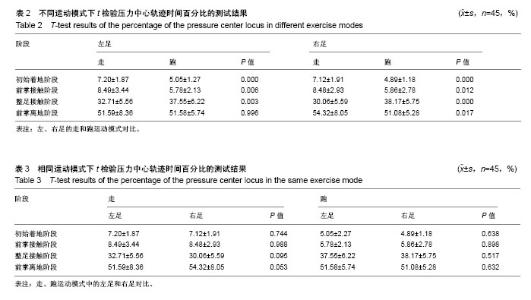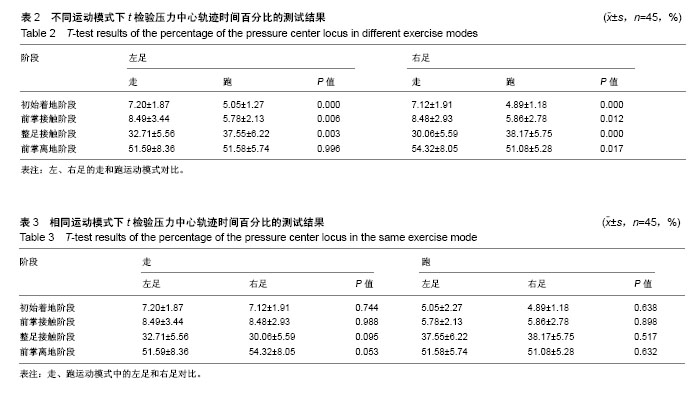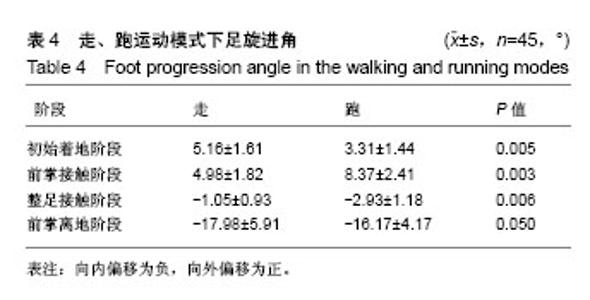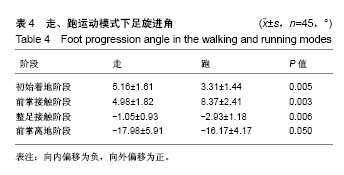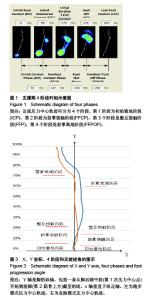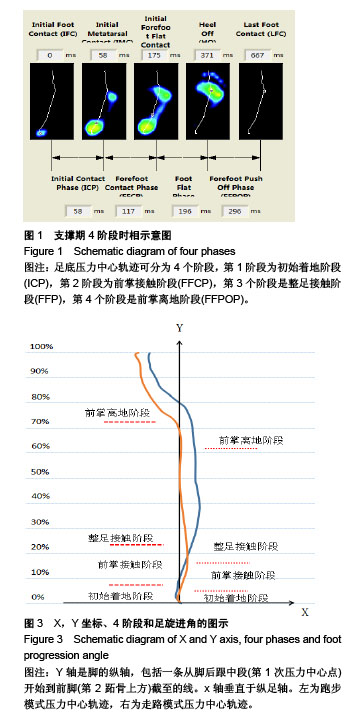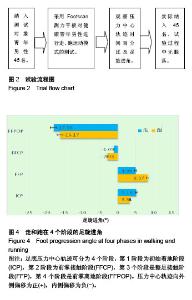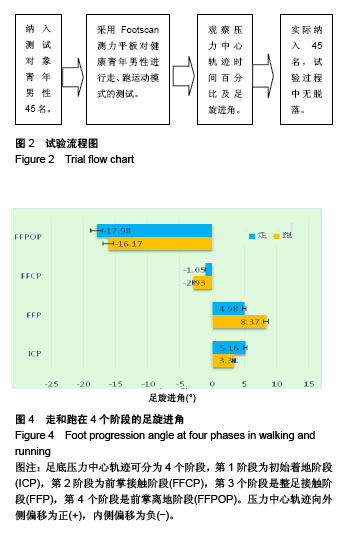| [1] Saunders PU,Pyne DB,Telford RD,et al.Factors affecting running economy in trained distance runners. Sports Med. 2004;34(7): 465-485.[2] 黎涌明,陈小平, 乌里•哈特曼. 4 min跑步和自行车全力运动中运动方式对有氧供能比例的影响[J].体育科学, 2016, 36(9):48-53.[3] Baur H. The validity of the gait line in the differentiation between the gaits of healthy individuals and patients. Med Sci Sports Exerc. 2001;33(5):S38.[4] Baur H,Divert C,Hirschmüller A,et al.Analysis of gait differences in healthy runners and runners with chronic Achilles tendon complaints. Isok Exerc Sci. 2004;12(2):111-116.[5] Willems T,Witvrouw E,Delbaere K,et al.Relationship between gait biomechanics and inversion sprains: a prospective study of risk factors. Gait Posture. 2005;21(4):379-387.[6] Willems TM, De CD,Delbaere K,et al.A prospective study of gait related risk factors for exercise-related lower leg pain. Gait Posture. 2006; 23(1):91-98.[7] 张仁祥,余洲,朱立艳,等.跑步相关损伤的预防[J].体育科技文献通报, 2012,20(1):81-83.[8] 詹荔琼,倪国新.跑步相关骨关节炎的发生与机制[J]. 中华物理医学与康复杂志, 2016, 38(11):868-870.[9] 汤荣光,戴尅戎.平地行走时踝关节力的分析[J].上海第二医科大学学报, 1986,2(2):126.[10] 孟青云,谈士力,喻洪流,等.基于青年人足底压力测试的步态实验研究[J].生物医学工程学杂志,2014,31(5):984-988.[11] 李立,陈玉娟,翟凤鸣,等.长期从事太极拳运动老年人足底压力分布特征及平衡能力研究[J].中国康复医学杂志, 2016, 31(9):984-988.[12] Bizovska L, Svoboda Z, Kutil P, et al. Variability of centre of pressure movement during gait in young and middle-aged women, Gait Posture.2014;40(3):399-402.[13] Chiu MC,Wu HC,Chang LY, et al. Center of pressure progression characteristics under the plantar region for elderly adults. Gait Posture. 2013;37(3):408-412.[14] De Cock A,De Clercq D,Willems T,et al.Temporal characteristics of foot roll-over during barefoot jogging: reference data for young adults.Gait Posture.2005; 21(4):432-439.[15] Sole G, Pataky T, Soleet CC, et al .Age-related plantar centre of pressure trajectory changes during barefoot walking. Gait Posture.2017;57(57):188-192.[16] Li Z, Liang YY,Wang L, et al. Reliability and validity of center of pressure measures for balance assessment in older adults.J Phys Ther Sci. 2016;28(4):1364-1367.[17] Allet L, Armand S, Golay A, et al. Gait characteristics of diabetic patients: a systematic review. Diabetes Metab Res Rev.2008; 24(3):173-191.[18] 刘丽玲,倪朝民,岳童,等.脑卒中患者步行时足底压力中心不对称性及其与步速的相关性[J].中国康复医学杂志, 2017,32(4):409-413.[19] Nolan K J, Yarossi M, Mclaughlin P. Changes in center of pressure displacement with the use of a foot drop stimulator in individuals with stroke. Clin Biomech. 2015;30(7):755-761.[20] 宋雅伟,魏文仪.不同硬度鞋底对人体步行过程中足底压力中心轨迹的影响[J].中国康复医学杂志,2010,25(9):875-878.[21] Luximon Y, Cong Y, Luximon A, et al. Effects of heel base size, walking speed, and slope angle on center of pressure trajectory and plantar pressure when wearing high-heeled shoes. Hum Mov Sci. 2015;41:307-319.[22] 赵丽,张国强,代志超,等.性别与BMI对中学生足底压力的影响[J].廊坊师范学院学报(自然科学版),2016,16(4):87-90.[23] 李萍,邹晓峰,程磊,等.有跌倒史的老年人群足底压力特征研究[J].中国老年学杂志,2011,31(7):1122-1124.[24] 徐洪璋,陈超,黄波,等.跟痛症动态足底压力分布特征[J].中国医药导报, 2017, 14(13):54-57.[25] Abby M, Lisa C, Saliba SA, et al. Balance training and center-of-pressure location in participants with chronic ankle instability. J Athl Train. 2015;50(4):343.[26] Cavanagh PR,Rodgers MM.The arch index: a useful measure from footprints. J Biomech.1987;20(5):547-551.[27] Pataky TC,Robinson MA,Vanrenterghem J,et al.Vector field statistics for objective center-of-pressure trajectory analysis during gait,with evidence of scalar sensitivity to small coordinate system rotations.Gait Posture. 2014;40(1):255-258.[28] Shrout PE,Fleiss JL. Intraclass correlations:uses in assessing rater reliability. Psychol Bull. 2015,86(2):420.[29] 罗炯,姬玉,郭启贵.裸足跑生物力学特征研究述评[J].体育学刊,2017, 24(1):138-144.[30] Kim KJ,Uchiyama E,Kitaoka HB,et al.An in vitro study of individual ankle muscle actions on the center of pressure.Gait Posture.2003; 17(2):125-131.[31] Burnfield M.Gait Analysis: Normal and Pathological Function. Physiotherapy. 2010;97(2):180-180.[32] Cock AD,Vanrenterghem J, Willems T, et al. The trajectory of the center of pressure during barefoot running as a potential measure for foot function. Gait Posture. 2008;27(4):669-675.[33] Deleo AT,Dierks TA,Ferber R,et al.Lower extremity joint coupling during running: a current update. Clin Biomech.2004;19(10): 983-991.[34] Farley CT,Houdijk HH,Van Strien C,et al.Mechanism of leg stiffness adjustment for hopping on surfaces of different stiffnesses. Appl Phys.1998;85(3):1044-1055.[35] 陆爱云.运动生物力学[M]. 北京:人民体育出版社, 2010:164-166.[36] Zhu L, Garon M, Quenneville É, et al. Electrical potentials measured on the surface of the knee reflect the changes of the contact force in the knee joint produced by postural sway. Gait Posture. 2017;52:159-164. |
